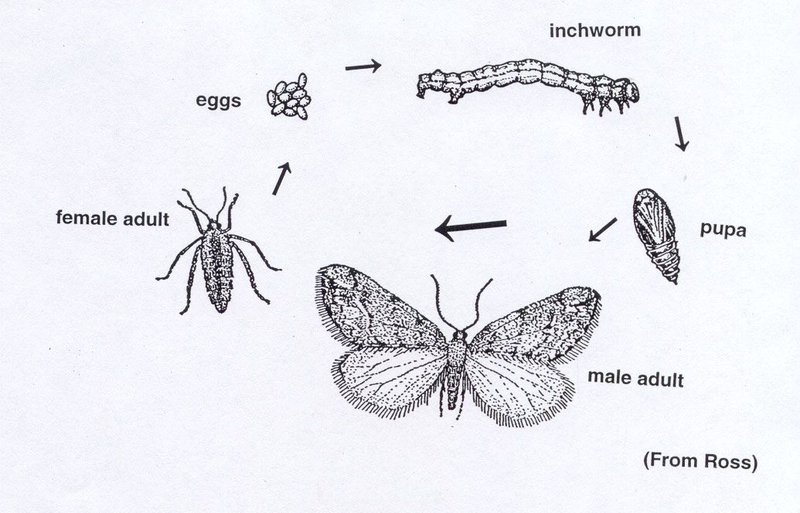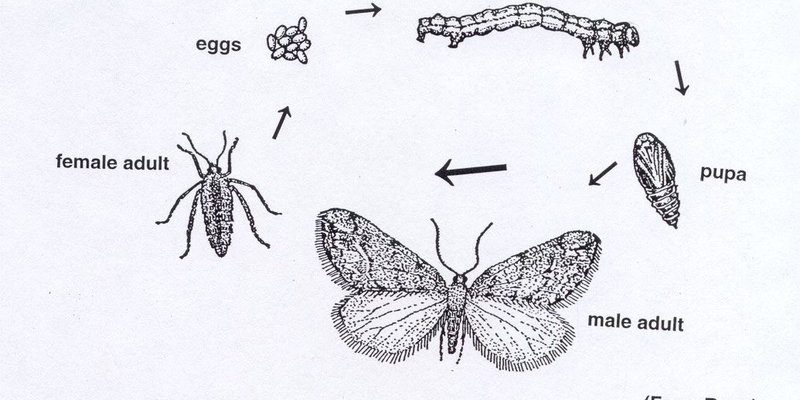
So, if you’ve ever wondered about the lifecycle of these curious little fellows, you’re in for a treat. Understanding their transformation from tiny eggs to fluttering moths can be as satisfying as watching a caterpillar turn into a butterfly. Let’s dive into the lifecycle timelines of common inchworm species, exploring their unique journeys along the way.
Understanding Inchworms: What Are They?
Before we get into the nitty-gritty of their lifecycle, let’s take a moment to understand what inchworms actually are. These little guys are the larvae of geometrid moths. You might find them munching happily on the leaves of trees and shrubs, and they come in various colors and patterns that help them blend into their surroundings. This camouflage makes them less likely to become a snack for birds and other predators.
Inchworms are often found in gardens and forests, thriving on vegetation. Their distinct way of moving—arching their bodies to take small steps—has earned them the name “loopers.” It’s quite a sight to see them inching along, looking like they’re doing a little dance on the leaves.
You might be surprised to learn that there are many species of inchworms, each with its own characteristics and preferences. Some common ones include the **Eastern Tent Caterpillar** and the **Fall Webworm**. Understanding these differences can help you identify which species you might encounter in your backyard.
The Egg Stage: Starting Point of Life
The lifecycle of an inchworm begins as a tiny egg. Female moths lay their eggs in clusters on leaves or branches. Depending on the species, a single female can lay anywhere from **50 to 300 eggs**. These eggs are often shiny and vary in color, ranging from green to brown, which helps them blend in with their surroundings.
The eggs typically hatch in about **1 to 3 weeks**, depending on the temperature and humidity. Warmer conditions speed up the process, while cooler temperatures can delay hatching. When the time is right, tiny inchworm larvae emerge, ready to start their journey. Honestly, it’s pretty miraculous how something so small can grow into a moth that flits through the night air!
During this stage, inchworm larvae are very vulnerable. That’s why they have evolved to be so perfectly camouflaged. If you look closely at the leaves, you might spot them. But if you blink, you might miss them!
The Larval Stage: Growing Up Inchworms
After the eggs hatch, the next phase is the larval stage, where the inchworms start munching on leaves. This is the most critical part of their lifecycle. In fact, during this stage, they can grow rapidly, feeding continuously to store energy for their transformation.
Inchworms will typically go through **5 to 6 molts**, shedding their skin as they grow. Each time they shed, they’re a bit bigger, a bit stronger, and a bit closer to their final form. This stage can last anywhere from a few weeks to several months, depending on the species and environmental conditions. Some prefer to feast on specific types of plants, which can help you identify them.
What’s captivating is that some inchworms have specialized behaviors. For example, if they sense danger, they might drop to the ground and remain still, mimicking a stick or twig. It’s nature’s way of saying, “I’m just part of the plant, nothing to see here!”
Pupation: The Transformation Process
Once the inchworm reaches its full size, it’s time for the next big change: pupation. This is where the real magic happens. The inchworm will usually find a safe spot, perhaps under a leaf or in the soil, and here it forms a protective casing called a **pupa** or chrysalis.
Inside this cocoon, the inchworm undergoes a transformation that’s almost like a magic trick. It breaks down its old body and re-forms into a moth. This process can take anywhere from **10 days to several weeks**, depending on the species and environmental conditions.
Here’s the thing: during this time, the inchworm is extremely vulnerable. It has to rely on its camouflage to avoid predators. But if it makes it through this stage, it will emerge as a beautiful moth, ready to start the cycle all over again.
The Adult Stage: Moths Take Flight
After pupation, the adult moth finally emerges, often with crumpled wings that need time to expand and dry. This is where you can appreciate the full life cycle of an inchworm. Adult moths typically look quite different from their larval forms, bearing delicate wings and often stunning patterns.
Adult moths tend to have a short lifespan, usually living just a few weeks to a couple of months. During this time, their main goals are to find a mate and lay eggs, continuing the cycle we’ve just explored. Interestingly, some species are nocturnal, coming out only at night to evade predators while searching for food and mates.
You might find it fascinating that adult inchworm moths are attracted to light, which is why you often see them fluttering around your porch light. It’s like they’re drawn to the spotlight, ready to take on their roles in the grand play of nature.
Why Inchworm Lifecycles Matter
Understanding the lifecycle timelines of common inchworm species isn’t just for nature enthusiasts. It has real-world applications, especially in gardening and agriculture. Knowing when and where inchworms lay their eggs can help you prevent infestations that could damage your plants.
Inchworms also serve as an important food source for many birds and other wildlife, playing a critical role in the ecosystem. By studying their lifecycles, researchers can better understand the health of our environments. Plus, every inchworm that flourishes can become a part of the larger chain of life.
Let’s not forget, these little creatures can also be an indication of environmental changes. For example, if you notice fewer inchworms, it might signal problems such as herbicide use or habitat destruction.
In conclusion, the lifecycle of inchworms is a captivating journey that combines vulnerability, transformation, and resilience. From their tiny beginnings as eggs to their graceful flights as moths, understanding these cycles adds depth to our appreciation of nature. Whether you encounter them in your backyard or gardens, inchworms are a reminder of the incredible processes at work in the natural world.
Next time you see an inchworm inching along, take a moment to appreciate its journey. After all, every inch they take is part of a significant lifecycle that connects them to the greater tapestry of life. Embrace their story—and maybe even share it over coffee, just like we did!

